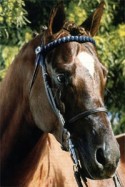ANGLOARAB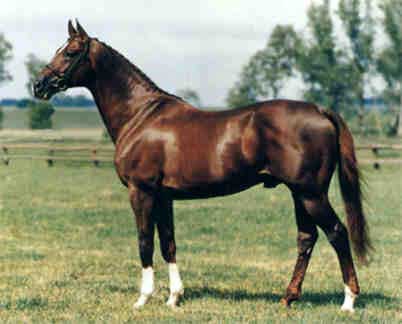
Typ: teplokrevník
KVH: 155 - 163 cm
Barvy: bělouš, hnědák, ryzák
Historie
Poměrně nové plemeno, které vzniklo křížením arabských a anglických plnokrevníků v 19. století. Obvykle se kříží arabský hřebec a anglická klisna. Tím vznikají větší a lepší jedinci, než u křížení arabské klisny a anglického hřebce. Angloarab musí mít minimálně 12,5% - 25% arabské krve (záleží na francouzské nebo anglické linii) a nesmí být křížen s jiným plemenem. V rodokmenu se musí vyskytovat pouze arabští a angličtí plnokrevníci a angloarabové.
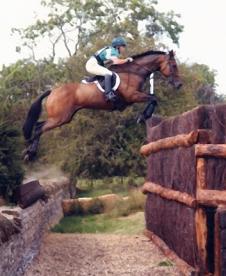 Francouzská linie
Francouzská linie
Tito koně kombinují nejlepší vlastnosti arabských a anglických koní. Jsou rychlí, vytrvalí a nenároční. Mají atletickou stavbu těla, dobře skáčou. Jsou také odolní, houževnatí a všestranní. Vynikají svou inteligencí a dobrou ovladatelností.
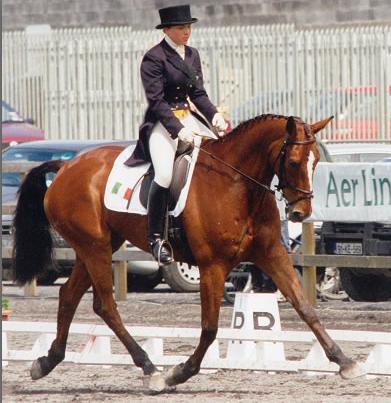
Konstrukce
Líbiví koně s kompaktní stavbou. Hlava je jemná s arabskými rysy, někdy s mírným štičím profilem. Oči jsou velké a živé. Krk je obloukovitě klenutý. Plece jsou silné a lopatky umožňují rychlý, plynulý pohyb. Hrudník je hluboký, záď je mohutná a silná. Končetiny jsou dobře utvářené, se silnými kostmi a pevnými klouby. Kopyta jsou kvalitní, tvrdá.
Angloarabi bývají bělouši, hnědáci a ryzáci, vždy s odznaky. V kohoutku mají 155 – 163 cm.
Využití
Angloarabi jsou rychlí, vytrvalí koně a výborní skokani. To je předurčuje především pro soutěže v military. Také se uplatňují v dostizích a ostatních jezdeckých disciplínách. Ve Francii se chovají především jako olympijští koně a získali nemálo medailí.
About Anglo-Arabians 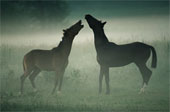
Copied from: Draper. Judith. The Book of Horses and Horse Care. New York: Anness Publishing Limited for Barns & Noble, Inc., 2003. Pages 30-31.
A more substantial horse than the purebred Arab, the Anglo-Arab is produced by mixing Arab and Thoroughbred blood. The Anglo-Arabian can result from a first cross between a Thoroughbred stallion and an Arab mare, or vice versa. It can also be produced by breeding Thoroughbred to Anglo-Arab or Arab to Anglo-Arab, or Anglo-Arab to Anglo-Arab. As a result of these different permutations, the amount of Arab blood varies a good deal. So, too, does the size and appearance of the horse. The biggest horses are often produced by using an Arab stallion on a Thoroughbred mare and the best examples of the Anglo-Arab will inherit the endurance and stamina of the Arab and the speed and scope of the Thoroughbred, but not the latter’s rather high-strung temperament. The head of the Anglo-Arab is closer in appearance to that to the Thoroughbred than the Arab. The Anglo lacks the dished profile of the purebred. The overall conformation is noticeably more Thoroughbred than Arab, although many Anglo-Arabs are more sturdily built that the average Thoroughbred.
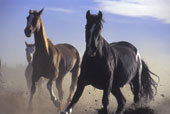 France has been a notable producer of Anglo-Arabs since the first half of the nineteenth century. The French Anglo-Arab traces back to two eastern stallions, Massoud (an Arab) and Aslam (which is said to be of Turkish origin). They were imported from Syria and crossed with three imported English Thoroughbred mares, Daer, Comus Mare, and Selim Mare. Their three daughters, Delphine, Clovis, and Danae, became the foundation stock of France’s first breed of sports horse. At one time, the Anglo-Arab was much used in France by the military and as a general riding and competition horse. More recently, it has been an influential factor in the development of the modern sports horse, the Selle Francais. Before the development of the Selle Francais, the French Anglo-Arab was highly successful in the competitive disciplines, particulary show jumping. Many of the horses ridden by the dual Olympic champion Pierre Jonqueres d’Oriola were Anglo-Arabs, the most famous being the little gelding Marquis III (a very successful Grand Prix and Nations’ Cup horse) and Ali Baba, on whom d’Oriola won his first Olympic title at Helsinki in 1952. More recently, French Anglo-Arabs have been successful performers with the French three-day event team. They include Twist la Beige (winner of the European Championship in 1993) and Newport and Newlot (both European team silver medallists). In recent years, French Anglo-Arabs have achieved great success in top-level three-day eventing, holding their own against the best of the Thoroughbreds and Warmbloods.
France has been a notable producer of Anglo-Arabs since the first half of the nineteenth century. The French Anglo-Arab traces back to two eastern stallions, Massoud (an Arab) and Aslam (which is said to be of Turkish origin). They were imported from Syria and crossed with three imported English Thoroughbred mares, Daer, Comus Mare, and Selim Mare. Their three daughters, Delphine, Clovis, and Danae, became the foundation stock of France’s first breed of sports horse. At one time, the Anglo-Arab was much used in France by the military and as a general riding and competition horse. More recently, it has been an influential factor in the development of the modern sports horse, the Selle Francais. Before the development of the Selle Francais, the French Anglo-Arab was highly successful in the competitive disciplines, particulary show jumping. Many of the horses ridden by the dual Olympic champion Pierre Jonqueres d’Oriola were Anglo-Arabs, the most famous being the little gelding Marquis III (a very successful Grand Prix and Nations’ Cup horse) and Ali Baba, on whom d’Oriola won his first Olympic title at Helsinki in 1952. More recently, French Anglo-Arabs have been successful performers with the French three-day event team. They include Twist la Beige (winner of the European Championship in 1993) and Newport and Newlot (both European team silver medallists). In recent years, French Anglo-Arabs have achieved great success in top-level three-day eventing, holding their own against the best of the Thoroughbreds and Warmbloods.
More Information:
Height – Around 15.3-16.3 hh
Color – Usually chestnut, bay, or brown
Conformation – Variable, but the best specimens tend towards good Thoroughbred conformation; intelligent head with straight profile, expressive eyes and alert ears; long neck with more prominent withers than the Arab; sloping shoulders; short, strong body – rather more sturdy than the Thoroughbred – with deep chest; somewhat long hindquarters; good, sound limbs; strong, well-shaped feet.
